Are you excited to be visiting the UK but a little nervous about some of the differences you may encounter?
For American visitors heading to the United Kingdom, there are more than a few unique differences to keep in mind. From driving on the left side of the road to language variations and cultural discrepancies, we have compiled a list of 101 things to know before you arrive.
I start the article with some of the most common things that are often mentioned in our UK travel planning Facebook group.
You will then find the excellent notes US visitor Kathryn Johnson provided following her first trip to the UK.
Kathryn (who chats to me about her trip in episode #56 of the podcast as well as episode #66 when we discuss some of these differences in detail) kept a diary of things that she noticed were different – things that may take some US visitors by surprise.
If you are heading from the US to the UK, please take a read. We know you will find the information in this article incredibly helpful.
- 🇬🇧 UK vs US 🇺🇸 14 things to know
- 1. Drive on the left (be careful when crossing the road)
- 2. Ice cubes
- 3. Lifts/elevators
- 4. Air conditioning
- 5. Tipping
- 6. Bedding – Top sheets
- 7. Packing bags in the supermarket
- 8. No outlets in the bathroom
- 9. Washcloths
- 10. US Dollars are not the currency in the UK
- 11. Book restaurants ahead
- 12. Language differences
- 13. 24-hour clock
- 14. Dates are written differently
- 🇬🇧 UK vs US 🇺🇸 by Kathryn Johnson
🇬🇧 UK vs US 🇺🇸 14 things to know
1. Drive on the left (be careful when crossing the road)
In the UK we drive on the left side of the road, which may feel rather unfamiliar to American drivers.
Apparently, the practice dates back to the days of horse-drawn carriages when drivers sat on the right side to have a clear view of oncoming traffic! Shifting to driving on the left allowed drivers to have their right hand free to greet others or defend themselves.
Of course, driving in the UK may be slightly more challenging these days if you are used to driving on the right. If you are not used to driving on the left, we recommend preparing for your trip with Tripiamo.
Another consequence is that you will inevitably look the wrong way when crossing the street! So make sure to look right, then left, then right again (you will see LOOK RIGHT painted on many roads)
2. Ice cubes
When you order a drink, you will discover that ice cubes are not served in large quantities. In fact, you will most probably be asked if you actually want ice.
I know this can be a shock for some visitors. It’s just that in the UK, we prefer to pay for the drink rather than have a glass full of ice!
If you want a large amount of ice in your drink, make sure to ask when you order. Otherwise, you may be very disappointed with the one or two cubes you will receive!
3. Lifts/elevators
In older buildings, such as hotels with heritage status, lifts may not be available. This means you may need to climb stairs to reach your room or navigate other areas of the building.
To avoid any inconvenience, make sure to confirm the presence of a lift when booking your accommodation. This simple precaution can save you from hauling luggage up multiple flights of stairs.
4. Air conditioning
Unlike some parts of the US, the UK does not have a particularly warm climate. As a result, air conditioning is not as prevalent in accommodations and public spaces. Many buildings in the UK are designed to retain heat, as it tends to be colder.
While some hotels may offer air conditioning, it is always wise to check before booking, especially during the warmer summer months. Alternatively, hotels often provide fans for guests’ comfort.
5. Tipping
Unlike in the US, where tipping is considered customary, tipping in the UK is not obligatory. You will find that service charges (generally 10 – 12.5%) are often included in bills at restaurants.
Leaving a small gratuity for good service is always appreciated, however (read more about tipping in our guide to visiting London for first-time visitors)
6. Bedding – Top sheets
One notable variation between the UK and the US is the absence of top sheets in most hotels, bed and breakfasts, and guest houses in the UK.
Instead of using top sheets, the UK primarily relies on duvets(with regularly washed covers).
If you prefer having a top sheet, it’s advisable to bring one with you to ensure your comfort during your stay.
7. Packing bags in the supermarket
In the UK bring your own reusable bags to the supermarket (or purchase at the store) and remember to pack the bags yourself.
Unlike the US (and Australia), where the person working on the till packs as they scan, in the UK, it is up to you to pack your own groceries.
8. No outlets in the bathroom
There are no electrical outlets in UK bathrooms – this is primarily due to safety regulations. Bathrooms are considered wet areas, and installing outlets there could increase the risk of electric shocks or short circuits.
To use electronic devices in the bathroom, such as hairdryers or shavers, utilize outlets located in other areas of your accommodation.
9. Washcloths
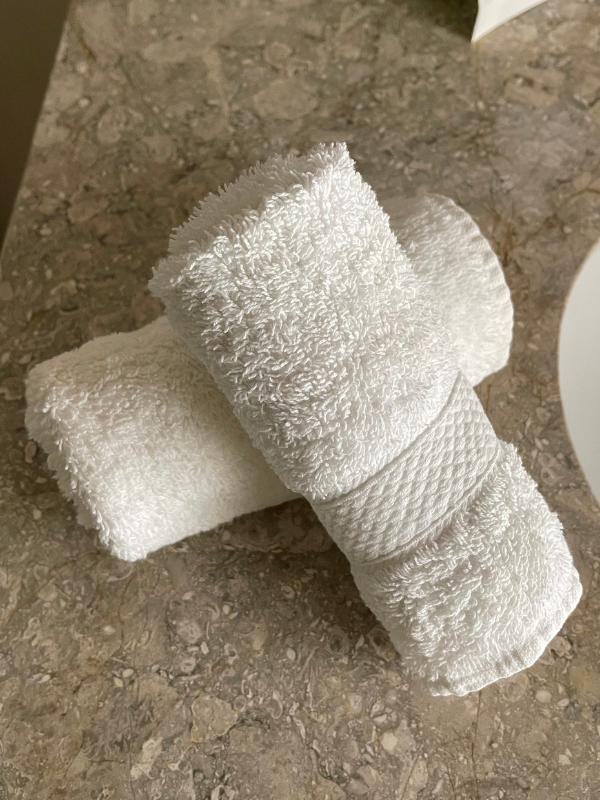
In the UK, washcloths are called flannels or facecloths. While some hotels may provide washcloths, they are regarded as personal items, and their availability cannot be guaranteed.
If using a washcloth is essential to your routine, consider bringing your own or purchasing disposable ones to have during your trip.
10. US Dollars are not the currency in the UK
The official currency in the UK is the British Pound (£)
While some cash may be useful (withdraw at an ATM after arrival), you will find that contactless transactions are the norm.
Read our article – How should I bring money to the UK – a complete guide to cash and cards
11. Book restaurants ahead
Popular restaurants can fill up quickly in bustling cities like London, particularly during peak hours and weekends.
We recommend making reservations in advance to ensure you secure a table for the date and time you desire.
Tip: If you have your heart set on a Sunday roast, please book ahead, as many Brits go out for this traditional meal, too!
12. Language differences
Understanding the differences in terminology can prevent confusion during your UK trip. In the UK, the ground floor refers to what Americans label as the first floor. So, if you’re searching for accommodations and notice references to ground floor, remember that it corresponds to the first floor in the US.
Being familiar with this distinction will help you accurately evaluate accommodation options based on your preferences.
While English may be the primary language spoken in both the UK and the US, there are subtle language differences between the two. For example, the UK refers to “chips” as what Americans call French fries, “crisps” as chips, “biscuits” as cookies and “lift” as an elevator.
13. 24-hour clock
The 24-hour clock format (military time) is frequently used in the UK, especially in transportation schedules and timetables.
This format provides a standardised and unambiguous way of indicating time, eliminating potential confusion between AM and PM eg 7:00 (AM) and 19:00 (PM)
Try to familiarise yourself with this system, as it will help you navigate public transportation and schedules more effectively.
14. Dates are written differently
In the UK, dates are typically written in the format of day/month/year (e.g., 15/07/2023), as opposed to the month/day/year format commonly used in the US.
This difference arises from the logical progression of the date structure, starting with the smallest unit (day), followed by the month, and then the year. Being aware of this distinction will help you interpret dates correctly during your stay in the UK.
🇬🇧 UK vs US 🇺🇸 by Kathryn Johnson
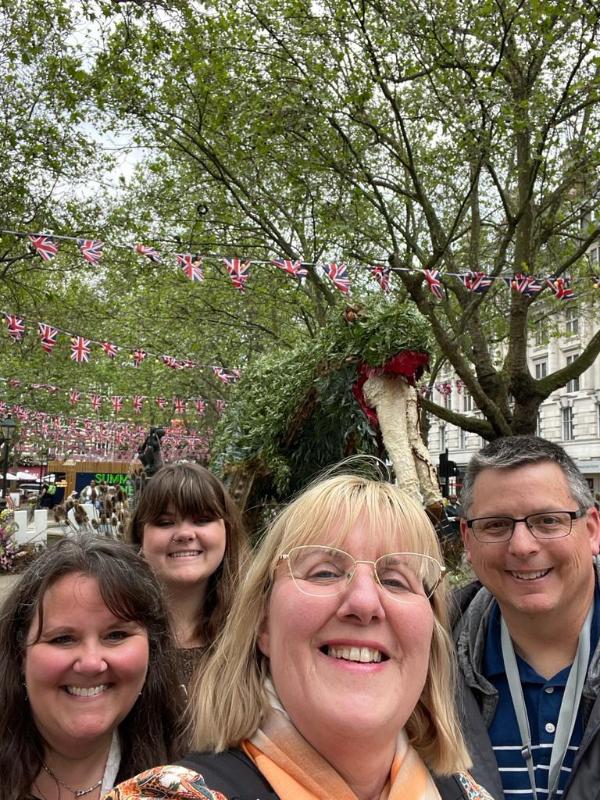
I was extremely fortunate to meet Kathryn when she booked an itinerary consult with us in 2023 for her trip in May of that year. I was even more fortunate to meet up with Kathryn and her family in London and spend a few hours exploring with them.
In addition to the podcast episodes, Kathryn kindly passed on her excellent notes, which I am sharing with you here.
Kathryn’s tips are listed in relevant sections – food, drink and restaurants; accommodation; shopping; public transportation; travel to Scotland & finally, miscellaneous.
☕️ Food, drink and restaurants
☕️ COFFEE: there is no half-and-half in the UK. You can ask for single cream, which is the closest they have to what we know, but not all coffee shops have it. I found a lot of the coffee tended to be a little weak, so I always asked for “an Americano with milk” and it was perfect for my morning coffee.
* Starbucks was fine for Americanos and cold brews
* FCB (found in train stations) was very good for Americanos
* Rosslyn (Cannon St.) had excellent coffee
⭐️ Things close earlier in the UK than they do in bigger cities in America… even on a weekend. Pay attention to when kitchens close in pubs.
⭐️ When buying bottled water, take time to read the label carefully. Still and sparkling water are sold everywhere, and the bottles are pretty much identical except for the words printed on the front and the cap colour.
⭐️ Allergies and disabilities are taken very seriously, and when in London, we were asked at every restaurant if any of us had allergies. The UK was one of the few places where people truly understood the difference between a tree nut allergy (which my daughter has) and a peanut allergy (which she does NOT have.)
It’s helpful to know the UK seems to have two labelling distinctions for allergies… a label will state “free from [ALLERGEN]” or, it says “may contain [ALLERGEN].” The 14 common allergens are listed in the ingredients in bold.
Frequently, an item seemed to have no tree nuts, but the warning would say “may contain tree nuts.” The UK does not have a distinction between “may contain,” “made on shared equipment,” or “processed in a facility that also processes tree nuts.”
Any of these three warnings are just lumped together under “may contain” … so ask questions and make your own informed decision!
⭐️ Every place seemed to have ample gluten-free options for those who need it.
⭐️ Iced tea is not a thing in the UK. And when you order a soft drink, you get ONE, no refills. Ask for ice, since it’s not automatic.
⭐️ When at a restaurant, ask for tap water, otherwise they will bring you (and charge you) for bottled water.
⭐️ British bacon is more like thin ham (like Canadian bacon) and they tend to call what we know to be bacon “American bacon” or “streaky bacon.” (Note – if you want crispy bacon you may have to ask 😀)
⭐️ The pace in restaurants in the UK is far more relaxed than in America. At almost every meal, we had to look for a server to request our check.
It took a couple of experiences for us to realize that the person who takes your order may not be the same person who brings your food and may not be the same person who brings your check.
Because they do not appear to work individually for tips, it seems all the staff carries the load equally. Instead of waiting for who you think is your server to refill your water or to ask question about a menu item, just ask anybody working there.
⭐️ Every restaurant we went to had a built-in 10% or 12.5% service fee that was the tip. All of our restaurant bills were paid at the table via a card reader, and we were never asked about adding extra tip money.
⭐️ If Americans want to live a little dangerously, eat some clotted cream (illegal in the USA) and drink a Scottish Irn-Bru. (Also banned! Except there is a reformulated version sold in America – but it’s not the same.)

Accommodation
🏨 Washcloths are not a common thing in the UK. I bought compressed 100% cotton washcloths from Amazon that were perfect for us. They are not thick, but one would last through an entire shower, and I used another one each night to wash my face.
🏨 Most of our accommodations only had shower gel, so I travelled with a small bar of soap as my skin does better with that.
🏨 Be aware that “the first floor” isn’t the ground level floor – it’s one floor ABOVE the ground floor. The UK second floor is the American third floor.
🏨 Our accommodations did not have Kleenex and no place seemed terribly generous with their napkins. I recommend carrying a travel-size tissue pack and some napkins in your backpack or purse. We also carried a travel pack of Wet Wipes.
🏨 There are no top sheets in the UK, so we travelled with a top sheet as I prefer to sleep with a very light sheet on me, and not a duvet. The duvets are washed between every guest, and they use lighter-weight duvets during the summer… but it was still too much for my preferences.
🏨 The outlets in the UK need to be turned on to work. We found most of them had a toggle switch on the switch plate. In one of our rentals, there was a bank of toggle switches that we needed to turn on to work the various kitchen appliances.
🏨 There are no electrical outlets in the bathrooms… just get used to drying your hair in the bedroom or in the central room. All our accommodations had hair dryers, so I didn’t need to bring my own. We only brought plug adapters and extra phone batteries to charge our phones.
🏨 Toilet water levels are much, much lower than we are used to. Whereas American toilets are always at least half-full of water, the toilets in the UK have what looks to be a couple of cups of water.
🏨 Shower curtains don’t seem terribly popular and weren’t in any of our accommodations. Instead, there was a glass wall or door, covering only half the shower area. Be mindful of that so you don’t step out of the shower and into a little pool of water on the bathroom floor.
Shopping
🛍 When in London, they do not have bags in grocery stores. (Some had the option to buy a plastic bag.) Many places outside London offered bags, but we frequently had to pay for them. We carried a string backpack with us and also a compact foldable bag that came in handy almost every day.
🛍 Boots is a chain owned by Walgreens, and it sells products similar to those of Walgreens.
🛍 Sainsburys and Tesco were the two grocery stores we frequented the most. There were express versions of these stores in some train stations, and scattered about all parts of London. Waitrose is another grocery store chain, but we never went into one as we didn’t have them in the area we stayed.
🛍 Stores close much earlier in the UK than in America, especially on a Sunday.
🛍 If you plan to buy any groceries to keep in your accommodation, consider traveling with some twist ties or binder clips, or even Ziploc bags. The binder clips I brought doubled as a clip to close up the loaf of bread and also hang up a cardigan to dry after I hand-washed it in the sink.
🛍 When buying souvenirs, read the labels! There is a lot made in the UK, but there is also a lot that is made in China.
🛍 We did a lot of our souvenir shopping and grocery stores… They have the best price on chocolates, candy, shortbread, tea, etc.
🛍 Before buying alcohol to bring home, make sure it is not already exported to the USA! I talked to a whiskey expert, and he told me about some that are not exported… there is a very smoky whiskey that is only sold at Edinburgh Castle, and I was able to buy small bottles of that to bring home, along with another brand that is not exported.
Public transportation
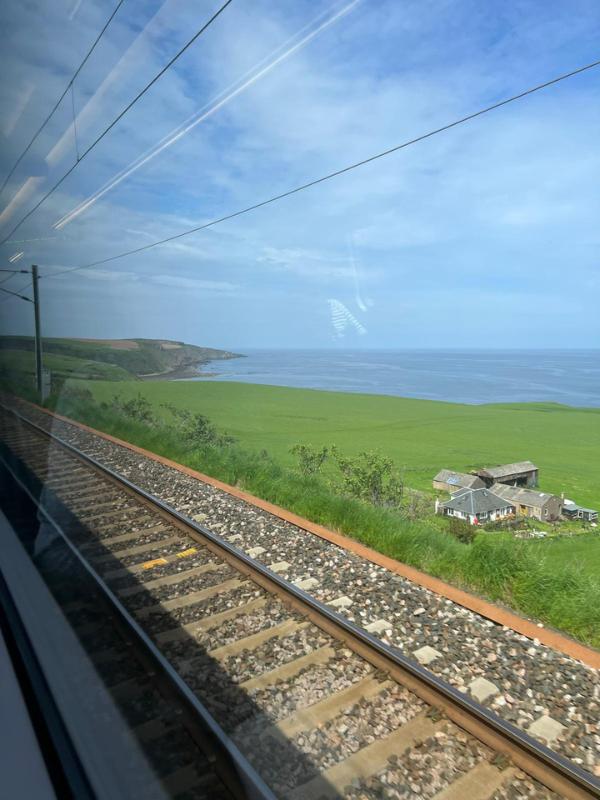
🚇 The tube system is not very handicapped-friendly overall, so definitely do your research in advance if someone in your travelling party cannot climb stairs.
🚇The tube and train station agents are incredibly helpful and knowledgeable… talk to them and ask questions! There are small pocket-sized tube maps, which we found invaluable to get a “big picture” of the system.
🚇 We took the Heathrow Express – it’s air-conditioned, and bringing luggage onboard was no issue.
🚇 The main tube lines with air conditioning are the District, Circle, Hammersmith & City, Metropolitan, and the Elizabeth line. All the rest – no air conditioning (Note – there are upgrades planned to add air conditioning to some lines)
🚇 This should go without saying, but carry hand sanitiser. The tube station is very heavily used, and it was almost always crowded no matter what time of day we travelled.
🚇 We noticed almost nobody spoke on the tube except later in the evening on the weekends.
🚇 Midwest-style chitchat is not a thing in the UK. We had one cab driver who chatted a little bit, but overall, they were basically silent! Almost nobody spoke on the Heathrow Express between the airport and Paddington station. Even the airport was eerily quiet compared to Midway or O’Hare in Chicago. Almost nobody chatted with other people while waiting in various queues.
🚇 Citymapper was the most helpful app for getting around. There is a small learning curve for knowing how to use it properly, so I do recommend trying it out in your home city before you head to the UK. Citymapper was able to track us even when we were deep underground on a tube… I would still receive pop-up instructions, telling me where to get off and exactly where to walk… even when other apps didn’t work and iMessage had no service.
🚇 At the Covent Garden tube – take the lift and not the stairs!!! There are 192 stairs between the tube and ground level which we learned the hard way.
🚇 The overground trains leave on time, so do not be late! We always allowed an extra 20 and 30 minutes before the train left and we are so glad we did!
🏴 Travel to Scotland
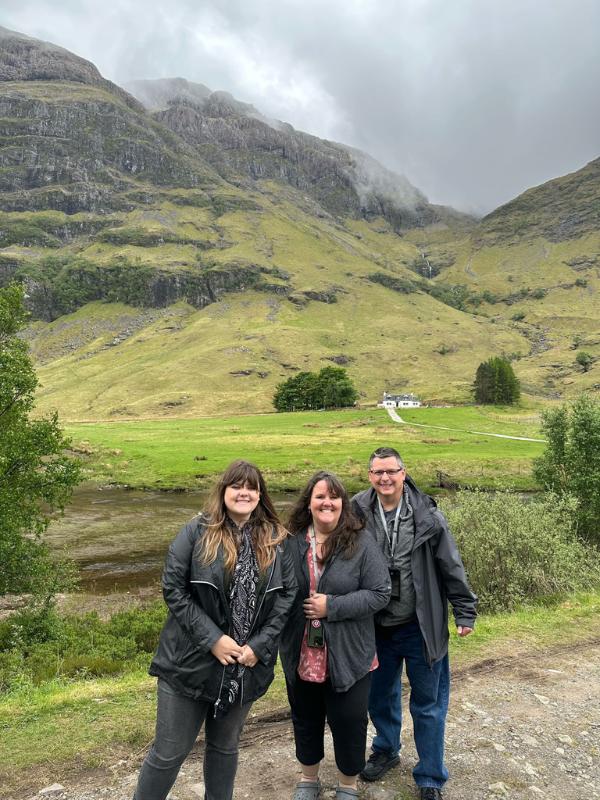
🏴 The train ride to Scotland was easy and beautiful, and it was worth it for our family to pay the extra money for first class. It includes all hot and cold beverages, sandwiches, some hot dishes, chips, cookies, and other snacks.
🏴 We took the LNER line from London to Edinburgh, and there was plenty of storage for luggage as long as it was not large. There was overhead storage space for bags and carry-ons and our 23-inch suitcase was able to fit too. Another woman had a larger suitcase, and it did not fit overhead and all of the space on the luggage shelf was filled up.
🏴 The train advertises USB ports on the train, but we found it was extremely slow to charge our phones so we stopped using it. This is when the portable charger came in handy!
🏴 We utilized a luggage storage facility across the street from Kings Cross, and it was worth every penny to not drag around an extra suitcase to Edinburgh. For peace of mind, we left an AirTag in our suitcase.
🏴 Scotland has the best tap water I’ve ever tasted. England also has delicious water, but Scotland’s was outstanding. No need to buy bottled water in the UK unless you’re out and about and thirsty and need to refill your water bottle!
🏴 Google Maps lies in Edinburgh! We walked from Waverley station to Edinburgh Castle, and Google Maps said it was an 11-minute walk that was mostly flat. In fact, it felt straight uphill and we stopped every three minutes to breathe!
🏴 The Hop on hop-hop-off bus in Edinburgh was a wonderful tour, and I would highly recommend people use it as a way of getting from point A to point B. We did not see a whole lot of cabs in Edinburgh.
🏴 Have some cash for buskers. Most of the people we saw were phenomenal musicians. Many of them also had QR codes for online tips!
Miscellaneous
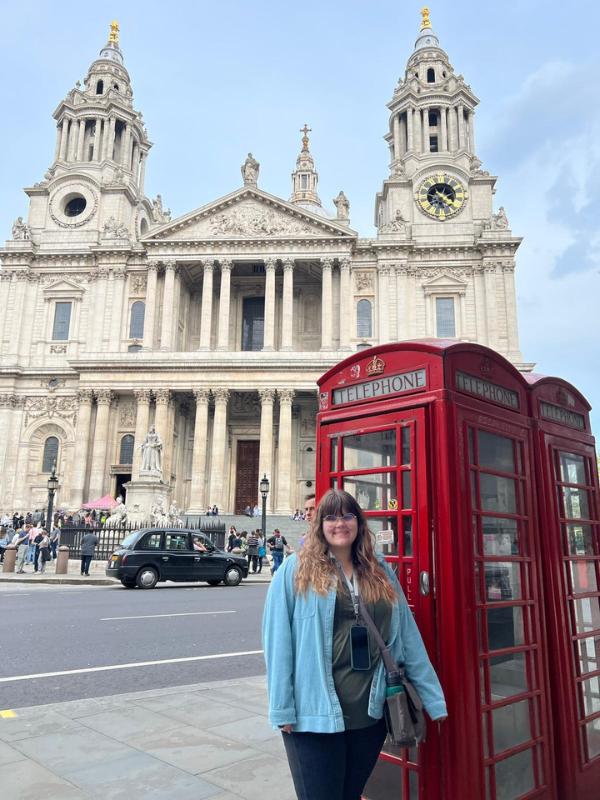
📝 London felt incredibly safe and we noticed there were not a lot of homeless people/beggars. They were not nearly as aggressive as some we have encountered in Chicago.
📝 LOOK UP! So much beautiful detail!
🙆♀️ I highly recommend doing calf stretches every morning before you ever leave your accommodation.
⛔️ Don’t follow the crowd when crossing streets, but wait for the walk/don’t walk signal. It’s the only way to navigate the streets safely! Pay attention to the LOOK RIGHT/LOOK LEFT painted on the ground at most intersections.
🚦 We noticed the stoplights turn yellow right before they were going to turn green, which we really liked.
🚶♀️ There seems to be no rhyme or reason for which side to walk on, and more than once, we overheard other Americans comment on it. With the exception of standing to the right when on an escalator, or a moving walkway, it’s kind of every man for himself!
✅ Carrying a portable charger is vital! If you are an avid phone user, take many photos and use your phone for navigation, I would recommend at least a 20000mAH portable charger/power bank. They are not cheap, but they are worth every penny to get a good one that lasts. Read our guide to what to wear and what to pack for London.
🔎 Google search everything! We were not sure how to use the washing machine in our unit, but there was a YouTube video that walked us through it.
🧺 Our washing machine was actually a washer and dryer combo which I have never seen before. It was very tiny and the wash and dry cycle combined was over five hours, we learned to do one small load every night so we didn’t fall behind.
🧺 Laundry tends to come out extremely wrinkly, so plan accordingly. You probably can’t remove something and wear it immediately.
💧 I carried a very small spray bottle and would fill it with water then spray the hems of capris so I could flatten them and we hung them to dry on the drying rack in our accommodation.
❓ Ask questions about anything you don’t understand – the majority of Brits we encountered had no problem answering our questions! I had a pickle and cheese sandwich and what we Americans consider a pickle is not with the British consider a pickle!
🧃 Almost all the straws we encountered in the UK were paper. Consider travelling with a metal or silicone straw if you don’t like paper straws.
🚽 With a couple of exceptions to the rule, the UK bathrooms are very small. Whenever possible, leave your jacket, purse, bags, etc., with someone in your travelling party. The bathrooms are not places you visit to freshen up or brush your hair or touch up make-up… they are functional toilets and places to wash your hands. We do love that the bathrooms offer great privacy with no gaps in their stall doors. We also really liked that the bathrooms automatically said “occupied” when the door was locked similar to in an aeroplane.
🚽 We only saw one pay bathroom and it is when we were in the Camden area. While Americans are used to bathrooms in almost every store and gas station, in the UK, they are few and far between. (They are plentiful in museums and ticketed attractions and restaurants.) We were very purposeful to use the bathroom anytime it was available.
💷 We could have gotten away without bringing any cash to the UK, and we ended up using less than 50 pounds over the course of two weeks… almost all of it was extra tips to various people. We did see a few signs in some smaller shops advising of a minimum charge for a credit card… it was typically very low. (£6 – £10)
❓ We regularly asked the guides and volunteers, and even the beefeaters, etc. their favourite part of each attraction/point of interest we were at – you will find some very fun, hidden gems and lesser-known info about each location! They never steered us wrong when we would ask them, “What often gets passed by that we shouldn’t miss at [XYZ location]?”
💳 We opened a credit card with no international fees specifically for our trip to the UK. We ordered one card in the name of each traveller, but it was all tied to the same account. Because each chip was different, we had zero issues with that when we were tapping in and out of the tube. We had much better luck hovering our card over the reader versus laying the card on the reader.
🗣 Most people know this… Brits say “chips” and we say french fries. Brits say “crisps” and we say chips. Brits say “biscuit” and we say cookie. Brits say “lift” and “brolly” and we say elevator and umbrella. We say “pants” and Brits think “underwear.”
🗣 Aubergine is an eggplant and courgettes are zucchini. Please do NOT refer to your waist pack as anything other than that. “Fanny pack” is not acceptable as it’s a crude word for the female private parts.
✅ By keeping these differences in mind, you’ll be better prepared to navigate the UK’s cultural nuances and make the most of your visit.
🇬🇧 ❤️ Embrace the unique experiences and enjoy your time in this fascinating country!
Podcast episodes
- Episode 47 – Practical tips for visiting the UK
- Episode 4 – Tips for first-time visitors to London
- Episode 7 – Things to know before you visit England!
- Episode 55 – UK vs US (part 1)
- Episode 66 – UK vs US (part 2)
- Episode 56 – Kathryn’s trip report
